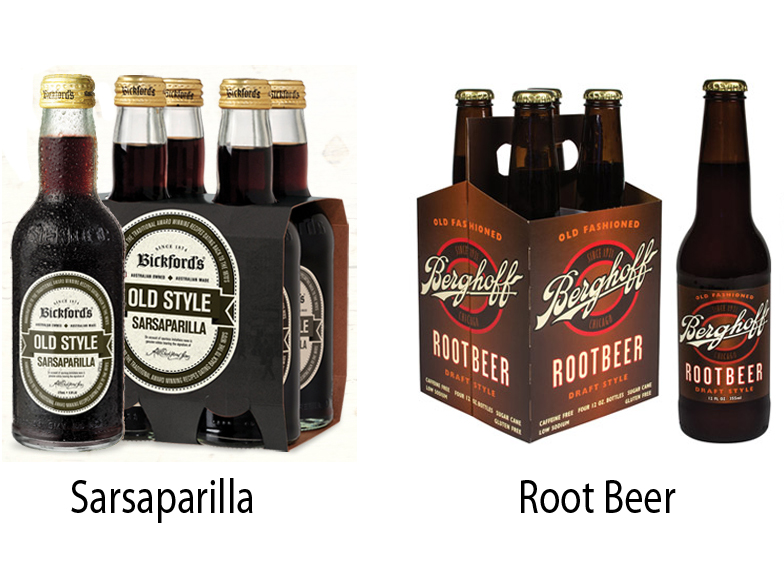There is something inherently satisfying about hearing the crack and sigh of a soda pop can being opened, or the tinkle of glass bottles as you pull a cold one out of the refrigerator. Even the people who dont drink carbonated beverages feel the aesthetically pleasing sensory draw we have built around soda pop in the United States.
But what is soda pop, really? Just a sweet, nonalcoholic drink with bubbles? Basically! Britannica broadly defines soft drinks as ones that were originally meant as a substitute for hard liquor in the United States (but brought with them a slew of other health issues). It is believed that the first soda pop was invented sometime during the 18th century and was made with a mix of chalk and acid. However, as time went on, carbonation techniques were cultivated, and “soda water” entered the marketplace (via Bundaberg). Today we have all sorts of bubbly goddesses like Pepsi, Fantas orange soda, Coke, ginger ale, and cream soda — you get the picture. Some of these brands and their varieties cant even be compared, but when it comes to the root beer and sarsaparilla flavorings, it can be hard to find the difference.
Both beverages are named after their distinct differences in ingredients when they were first made. Sarsaparilla was made from the Sarsaparilla vine, while Root Beer, roots of the sassafras tree. These days, Root Beer recipes do not include sassafras as the plant has been found to cause serious health issues.

What is root beer?
Some of you might not have even heard of sarsaparilla before and are only familiar with root beer. But even if youve popped open a bottle of the stuff, do you actually know what the flavor is? Many of us enjoy a variety of delicious-tasting drinks without asking ourselves the all-important question: What is this made of?
Even though it has “beer” in its name, root beer is not alcoholic today. Root teas and medicinal elixirs were quite popular up until the modern-day era and were heavily used by the native tribes of North America (via Sprecher Brewery). Many of the indigenous peoples across the continent used plants such as sassafras, wintergreen, and sarsaparilla for their health benefits, and when European invaders made contact with these tribes, they adopted the technique.
Diffords Guide says that what we consider root beer today was inspired by the sassafras brew the First Nations people used medicinally. The root of the plant gave the beverage its flavor and was enjoyed by popular historical figures such as Benjamin Franklin. We have since sweetened and carbonated the beverage into the soft drink we know and love today, however, because sassafras roots were banned by the FDA in 1960, root beer is now flavored using a mix of elements like wintergreen and anise (via Diffords Guide).
While root beer was traditionally made from the sassafras root, sarsaparilla is brewed from the sarsaparilla plant, which is a tropical vine native to Mexico, Jamaica, the Caribbean, South and Central America, and some parts of the Southern United States (via American Indian Health and Diet Project). According to Healthline, it was consumed heavily in the past for its medicinal qualities and used to treat all kinds of ailments including psoriasis, arthritis, and rheumatism. Some also believed that the tuber would cure syphilis. It has also been concluded that the sarsaparilla beverage may contain anti-cancer and anti-inflammatory properties.
In the early 19th century, a drink by the name of “sarsaparilla” hit the markets; however, Healthline claims that — even though the name boasts that of the tropical plant — the producers of this sarsaparilla drink used sassafras root to make it taste more like root beer. Today, most sarsaparilla drinks use artificial flavoring, though Bundaberg brewing companys recipe uses real ingredients such as the popular licorice root, ginger root, vanilla bean, molasses, and of course, sarsaparilla root!
A brief thirst quenching history of Root beer and Sarsaparilla
FAQ
Does sarsaparilla taste like root beer?
Is A&W root beer or sarsaparilla?
Why can t you buy sarsaparilla anymore?
Why was root beer called sarsaparilla?
What makes root beer different from sarsaparilla?
One of the defining characteristics of root beer is its unique blend of ingredients, which often include sassafras, wintergreen, anise, and licorice, among others. Root beer can also be differentiated from sarsaparilla by its carbonated texture and sweet taste. The history of root beer is as fascinating as its flavor.
What does Sarsaparilla Taste like?
Root Beer: Root beer has a complex flavor profile with notes of sweetness, sassafras, vanilla, and various spices. It is sweet and has a creamy quality. Sarsaparilla: Sarsaparilla has a distinctive flavor characterized by earthy, sweet, and slightly bitter undertones. Many often compare the flavor of sarsaparilla to a mix of root beer and licorice.
What is the difference between Birch Beer and sarsaparilla?
While root beer and birch beer share many similarities, including the use of wintergreen and other herbs and spices, sarsaparilla has a more distinct flavor profile that sets it apart from both. Sarsaparilla is also less carbonated than traditional soda, with a smoother texture that appeals to many drinkers.
Does sarsaparilla contain alcohol?
For the most part, sarsaparilla is caffeine-free and will never contain alcohol, though it may contain guarana or another ingredient for energy. Root beer, however, can be alcoholic and may also contain caffeine. Sarsaparilla is made by using boiling water mixed with the roots, and spices.
